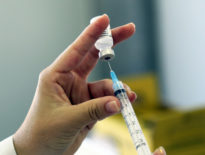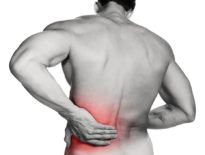
“The first principle is that you must not fool yourself – and you are the easiest person to fool.”
— Richard Feynman
This month brought more bad news for coronary artery stents. To understand how far coronary stents have fallen, we have to understand what we’ve been using them for.
But first I should explain that coronary stents are life-saving treatments during a heart attack. That has been well established and is not changed by anything in this post. This post is about using coronary stents in patients with narrowing in the coronary arteries who are not having a heart attack.
Coronary artery stents are metal wire tubes that are inserted into narrowed arteries to keep them open. We used to think they prevented heart attacks. The reasoning was compelling and goes like this. People with narrowing in their coronary arteries caused by atherosclerosis (cholesterol build up on the inside of the arteries) sometimes have heart attacks. People without narrowing in their coronary arteries don’t have heart attacks. Heart attacks are caused by blood clots in coronary arteries that suddenly close the arteries. If we can open the narrowest parts of the arteries with stents then blood clots won’t form there and heart attacks will be averted.
Based on that reasoning coronary artery stents were widely used in patients with coronary narrowing due to atherosclerosis. Then in 2007 the COURAGE trial randomized patients with narrowed coronary arteries to receive either medications (like statins and aspirin) aimed at preventing heart attacks or a stent plus the same medications. The results showed no difference in incidence of heart attack or death between the two groups. So stents don’t prevent heart attacks and don’t save lives.
This finding actually led to fewer stents being placed nationwide. The newer understanding was that medications prevented heart attacks and saved lives, but that stents still had a role in decreasing chest pain from narrow coronary arteries. So the use of stents were recommended only for those patients with coronary artery narrowing who still had chest pain when exercising despite being on appropriate heart medications.
The belief that stents relieve chest pain is well founded physiologically. Muscles get sore when they have too little blood flow for the amount of work they do. Think about your legs when you are climbing a long hill or your biceps after lifting your child all day. A narrowed coronary artery limits the blood flow that the downstream heart muscle can receive, so when the heart is expected to do a lot of work – during exercise – the muscle gets sore and the patient feels chest pain. If the artery is kept open, chest pain should not occur. Hundreds of thousands of coronary artery stents are placed annually to relieve chest pain.
A study published online in November 2 in the British journal The Lancet turned this understanding on its head. Many previous trials comparing stents plus medications to medications alone have been randomized. But none of the studies have been blinded. That is, patients knew whether they were undergoing an invasive procedure to put a stent in their heart, or whether they were just swallowing some tablets every day. Is it possible that this knowledge biased their experiences and led to a bias in their reported symptoms? This trial attempted to answer that by actually keeping the patients from knowing which treatment they were receiving.
The study enrolled patients with severe narrowing in a coronary artery who had chest pain when they exercised. Two hundred patients were randomized to two groups. Both groups received optimum medications aimed at preventing heart attacks and decreasing chest pain. One group underwent stenting of the narrowed artery. The other group underwent a sham procedure that was nearly identical to the first group. A catheter was inserted into an artery. A wire was fed into the coronary artery, but no stent was deployed. Patients had no idea whether they were in the stent group or the sham procedure group, and neither did the physicians who followed them afterwards to measure the outcomes.
Not surprisingly, stenting led to a much more open artery than the sham procedure. That is, stenting did what it was supposed to do to the plumbing – open the artery. But the startling outcome was that both groups had equal relief of chest pain and equal improvement in ability to exercise.
That means that the stents are not relieving chest pain. The chest pain must have been relieved partially by the medications that both groups received and partially by the patient’s expectation that she received a very invasive, very dramatic, high-tech, and expensive intervention.
We’ve long known that patient expectations and physician expectations can strongly bias medical trial results. That’s not because anyone is trying to cheat, but because everyone wants to be part of good news. No one wants to tell his doctor that the surgery didn’t help. And no doctor wants to do a procedure she doesn’t think will work. Study after study confirms that our expectations strongly bias our experience. For example tasters prefer a wine in a bottle with an expensive price tag over a wine in a bottle with an inexpensive price tag even when the same wine is in both bottles.
That is why blinding is so important. The only way to isolate the effect of an experimental medication or procedure is to make sure the expectations and experience is identical in the experimental group as in the control group. With medications, that’s fairly easy. The control group can get a placebo. But in the case of an invasive procedure, that frequently means subjecting the control group to an invasive and potentially risky sham procedure. That makes it much harder to find willing patients, and makes ethical review boards less likely to approve the trial.
The study has some limitations. The number of patients randomized was relatively small, and the time that they were followed was short. It is possible that a small benefit of stents would have been found in a larger longer study. But a dramatic benefit was expected, and it was dramatically not found. The study also excluded certain patients, for example those with narrowing in multiple arteries, so the results might not apply to everyone.
Nevertheless, the lesson for doctors and patients is that medications alone decrease chest pain about as well as medications and a coronary stent. So we should save stents for patients who are having heart attacks. And the lesson for researchers is that we each carry between our ears a highly sophisticated engine for bias, error, and self-delusion. Keeping our opinion out of the data is hard work, but is the only way to learn the truth.
Learn more:
‘Unbelievable’: Heart Stents Fail to Ease Chest Pain (New York Times)
Do Heart Stents Work? What You Need to Know (Time)
Percutaneous coronary intervention instable angina (ORBITA): a double-blind, randomised controlled trial (The Lancet)
Baba Shiv: How a Wine’s Price Tag Affect Its Taste (Stanford Graduate School of Business)
My previous posts about angioplasty:
On Stinting On Stents (my post from 2013 inspired by President Bush’s angioplasty)
Is There a Patient Educator in the House? (about a 2010 study which showed angioplasty patients did not understand the benefits of the procedure)
For Most Heart Patients Medicines are as Good as Angioplasty (2008)
Tangential Miscellany
Happy Thanksgiving! I hope all of you have joyous celebrations with loved ones in which blessings are counted rather than calories.

